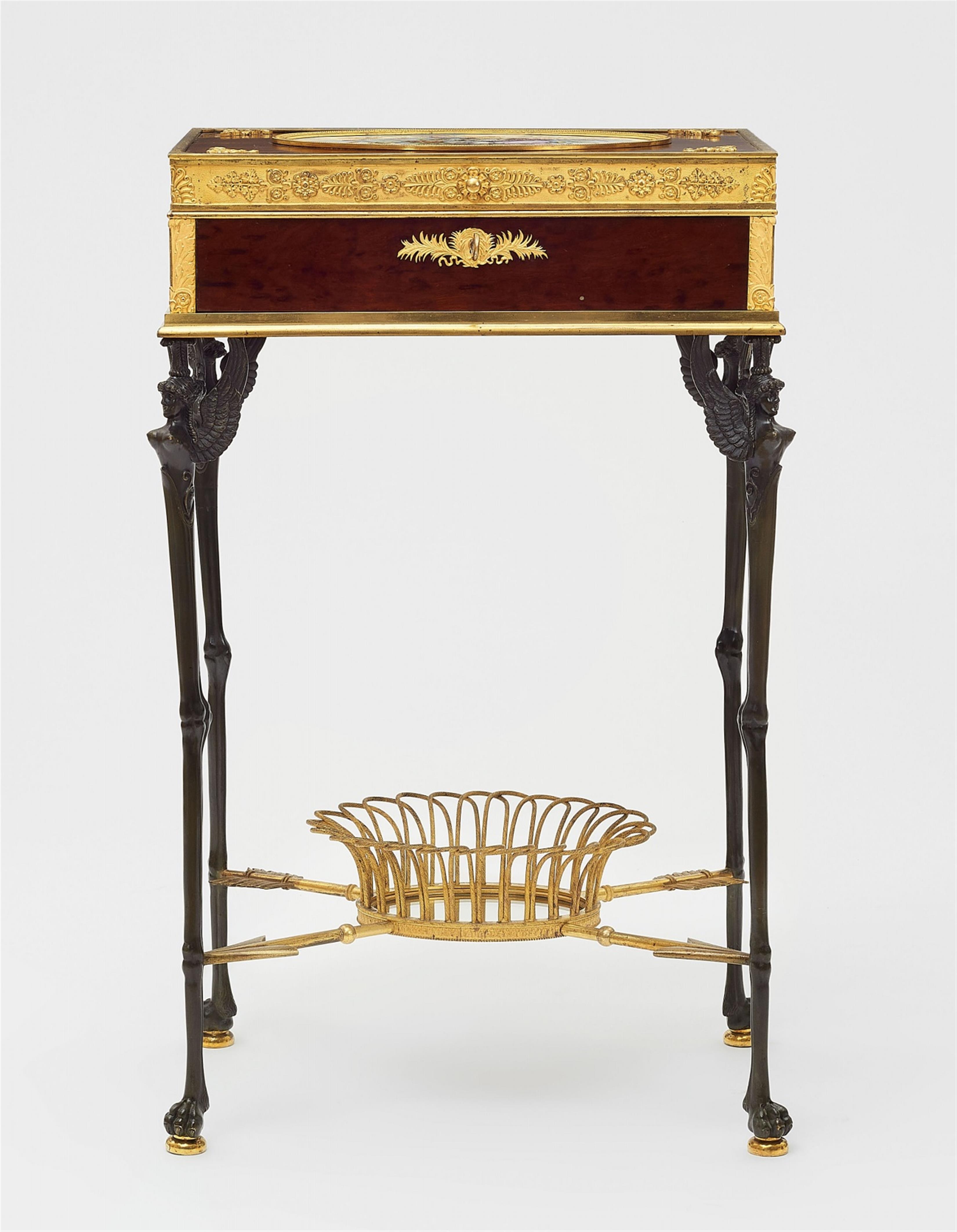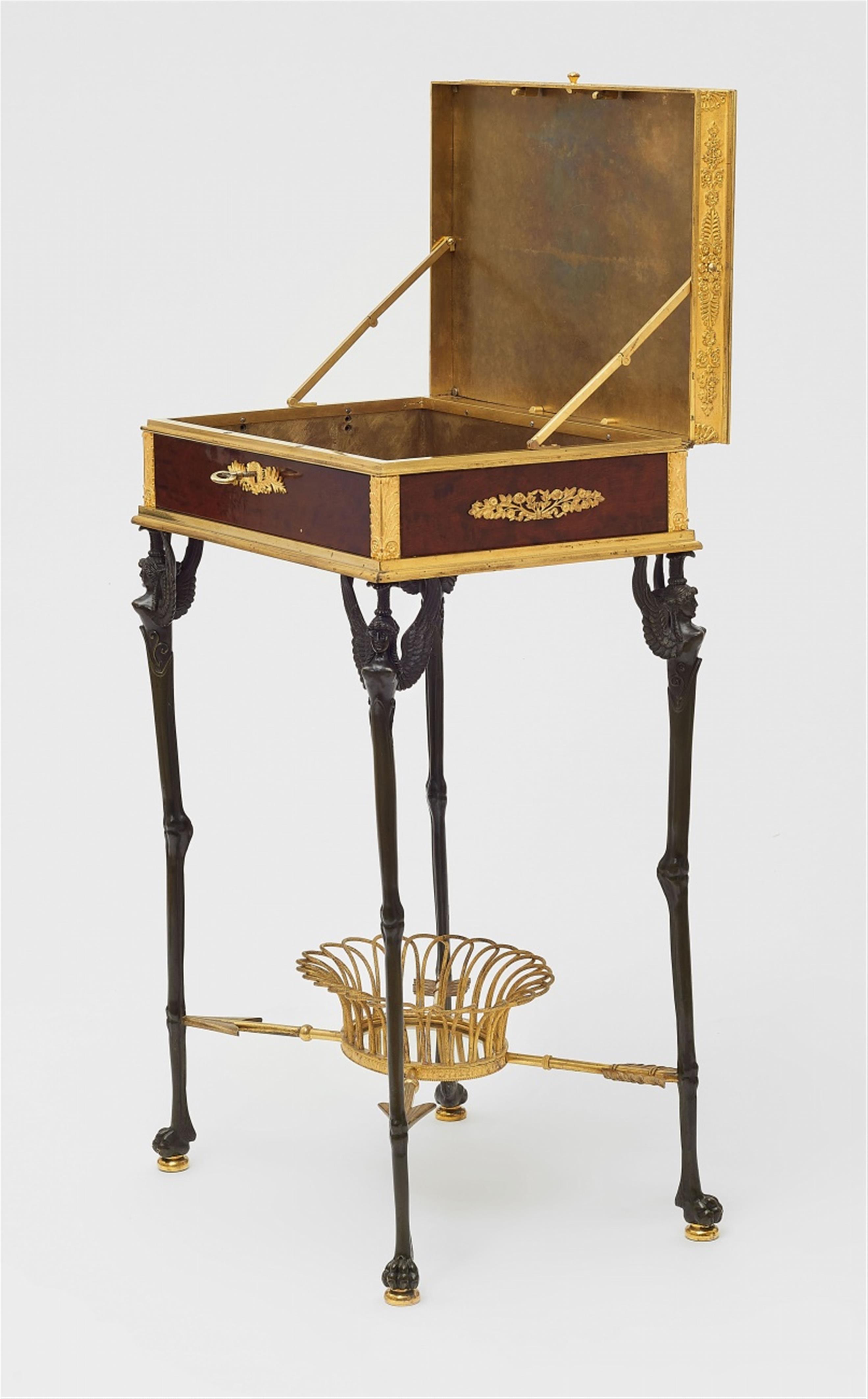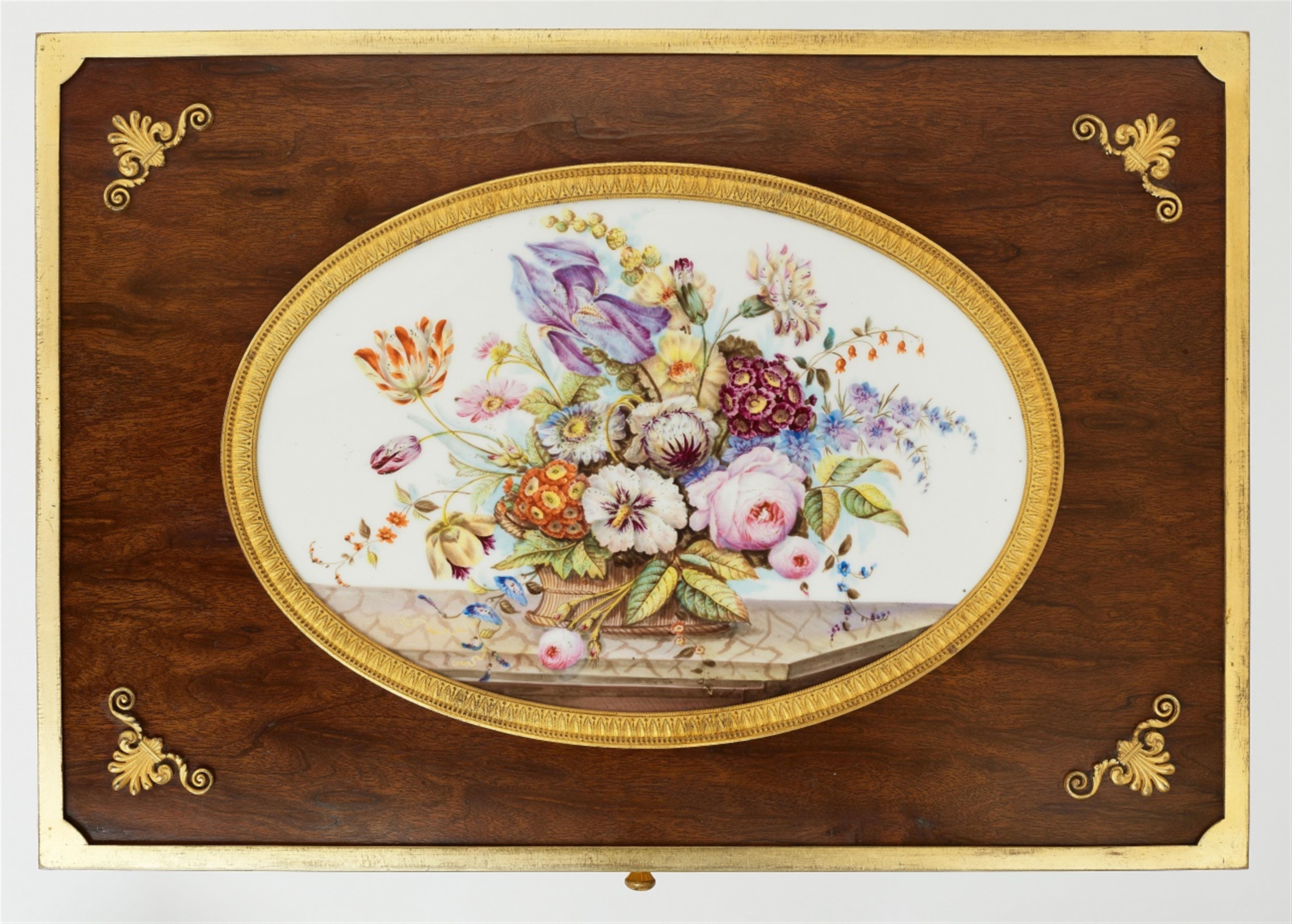An exceptional Empire style guéridon
Oblong box shaped side table with a hinged lid and a concealed lock in the front with iron bolts. The lid inset with an oval porcelain plaque painted with a luscious bouquet in a basket on a marble slab. The interior fitted with a sheet bronze lining and with two ormolu braces for the lid. On four supports formed as harpies on zoomorphic legs terminating in claw feet. The gilt stretcher formed as two crossed arrows supporting a delicate pierced basket with a mirror in the centre. With four screw holes on the interior for former inner compartments. H 74.8, W 47.5, D 34 cm.
France, mid- to third quarter 19th century.
This exceptional piece of furniture is inspired by the fine chests of drawers and side tables produced for Madame du Barry and Madame Adélaïde. These were also richly decorated with ormolu appliqués and Sèvres porcelain plaques with similar floral decoration in the door panels and tops. The ebenist Martin Carlin was one of the leading specialists in furniture combined with porcelain plaques, as were Roger Vandercruse Delacroix and Adam Weisweiler. Elaborate pieces inset with porcelain were still produced for Napoleon's residences, for example a magnificent guéridon in Fontainebleau Castle. The work's cobalt blue porcelain shaft is finely decorated with Pompeian ornaments and the round porcelain top is painted with mythological motifs in four medallions. Occasionally, the marble tops of three-legged gueridons were painted to resemble porcelain, but the decoration was carried out in cold enamels and thus had the matte appearance of a fresco. For this technique, Roman-Etruscan ornaments were preferred, for example those used in the work attributed to Adam Weisweiler and Pierre-Philippe Thomire, now housed the Musée Marmottan in Paris. Generally speaking, at that time, small oval porcelain panels painted with bouquets in the style of the Louis XVI period were no longer in demand. The fact that this box is decorated with a combination of Louis XVI and Empire style elements suggests that it may have been produced in the Napoléon III period, after 1850.
Literature
For the pieces decorated with porcelain plaques in the Louvre see Alcouffe/ Dion-Tenenbaum/ Lefébure, Furniture Collection in the Louvre, vol. 1, Dijon 1993, no. 72, 75 and 89. For the Empire era pieces with porcelain plaques see Samoyault, Mobilier Français Consulat et Empire, Paris 2009, illus. 203 and 374. Cf. Bodinek, Raffinesse im Akkord, vol. 2, Dresden 2018, p. 238, for two similarly painted bouquets by Jean-Baptiste Monnoyer from the series 'Liure de Plusieurs Corbeilles de Fleurs', in the Dresden SKD, Kupferstichkabinett, see inv. A 81627 and A 81628.






